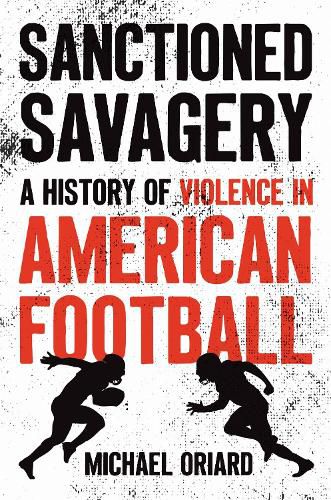Readings Newsletter
Become a Readings Member to make your shopping experience even easier.
Sign in or sign up for free!
You’re not far away from qualifying for FREE standard shipping within Australia
You’ve qualified for FREE standard shipping within Australia
The cart is loading…






American football was a violent sport from its beginning as a college game in the 87 s and 88 s, in part because learning how to deal with the pain and violence, to "take it," made men out of college boys. Michael Oriard, former NFL linebacker and professor emeritus of English, shows us that this fundamental belief persisted for more than a century, until signs of chronic traumatic encephalopathy (CTE) were found in Pittsburgh Steelers' center Mike Webster's brain. Suddenly, the cost of "taking it" could mean long-term damage not just to the body but also to the brain. Without anyone knowing it, that risk had soared since the 95 s and 9 s, when the hardshell plastic helmet became the primary weapon for blocking and tackling, as taught by a new generation of college coaches, led by the University of Alabama's Bear Bryant.
In this cultural history of football at nearly all levels-high school, college, and pro-Oriard traces the perennial tension between health and culture regarding football as reflected in what the public read in newspapers, magazines, and online. Through examining how we once felt and how we now feel about the game, Oriard challenges us to grapple with the possibility that football might be too violent, in an intolerable way.
$9.00 standard shipping within Australia
FREE standard shipping within Australia for orders over $100.00
Express & International shipping calculated at checkout
American football was a violent sport from its beginning as a college game in the 87 s and 88 s, in part because learning how to deal with the pain and violence, to "take it," made men out of college boys. Michael Oriard, former NFL linebacker and professor emeritus of English, shows us that this fundamental belief persisted for more than a century, until signs of chronic traumatic encephalopathy (CTE) were found in Pittsburgh Steelers' center Mike Webster's brain. Suddenly, the cost of "taking it" could mean long-term damage not just to the body but also to the brain. Without anyone knowing it, that risk had soared since the 95 s and 9 s, when the hardshell plastic helmet became the primary weapon for blocking and tackling, as taught by a new generation of college coaches, led by the University of Alabama's Bear Bryant.
In this cultural history of football at nearly all levels-high school, college, and pro-Oriard traces the perennial tension between health and culture regarding football as reflected in what the public read in newspapers, magazines, and online. Through examining how we once felt and how we now feel about the game, Oriard challenges us to grapple with the possibility that football might be too violent, in an intolerable way.